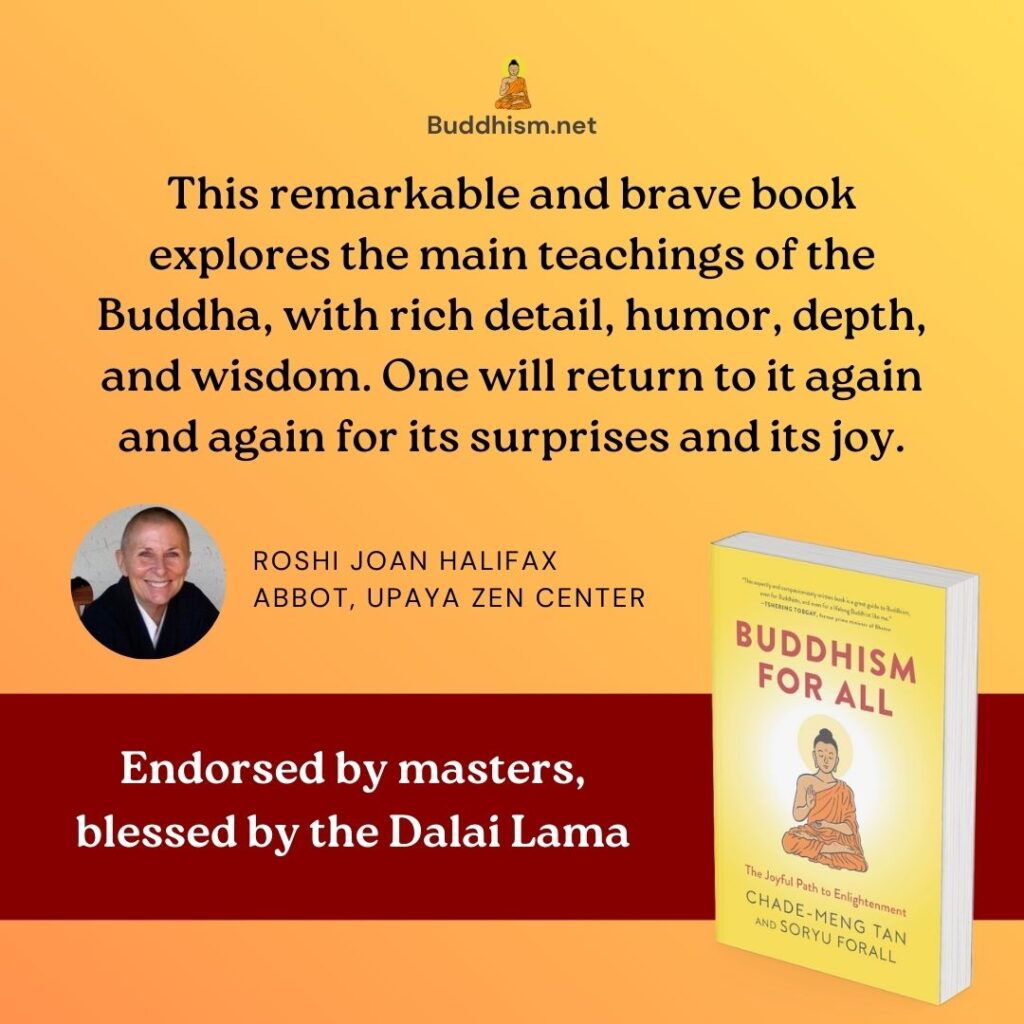
(Context: Emptiness)
Out of Nāgārjuna’s MMK comes another teaching that had a profound and long-lasting influence on Buddhism, that is the idea of the two levels of truths. The way Nāgārjuna puts it:
The Buddha’s teaching of the Dharma is based on two truths: a truth of worldly convention and an ultimate truth. Those who do not understand the distinction drawn between these two truths do not understand the Buddha’s profound truth. Without a foundation in the conventional truth the significance of the ultimate cannot be taught. Without understanding the significance of the ultimate, liberation is not achieved.[1]
To understand this, we need a modern-day analogy: physics. You and I operate in a reality where solid things such as tables and chairs exist, matter is different from energy, particles are different from waves, space and time are uniformly distributed, and all motion deterministically obey Newton’s laws. Go down to the sub-atomic level, however, and everything operates in an entirely different reality. Matter is energy, particles are waves, space and time are bendable (and even collapsible, as in a black hole), and quantum mechanics is probabilistic rather than deterministic. I joke that at the sub-atomic level, Newton’s laws become Newton’s suggestions. Also, at that level, there is really no such thing as solid objects. Atoms are comprised almost entirely of space, and the only reason your table feels solid to you is that the lattice of atoms forming the table exert forces on the lattice of atoms forming your hand, and that’s why the table exhibits the illusion of “solidity”.
In other words, nature operates simultaneously on two separate levels of reality, each following its own starkly different set of physical laws. In physics, just as in the two levels of truth in Buddhism, without a foundation in classical physics, the significance of quantum physics cannot be taught, and without understanding quantum physics, you cannot be said to truly master physics.
The teaching of two levels of truth was alluded to by the Buddha, but never actually explicitly articulated. In the oldest texts, the Buddha was never known to have said anything like, “Monks, there are these two levels of truth: conventional truth and ultimate truth.” The closest he came to was saying that some of his discourses are of explicit meaning (nītattha) while others require interpretation (neyyattha), and that you misrepresent him if you explain a discourse whose meaning requires interpretation as a discourse whose meaning is explicit, or vice versa.[2]
The Buddha tried to make all his teachings widely understandable and practicable, so he almost always taught at the level of conventional truth, which is why almost every time we quote him, you don’t have much of a problem understanding. There were, however, times where the Buddha was clearly speaking at the level of ultimate truth, and it was very often when he was talking about nirvana, which has no frame of reference at all in conventional truth and, therefore, cannot really be spoken about at the level of conventional truth. The clearest example so far is the discourse we referred to in an earlier post where he said, “For one who sees the origin of the world as it really is with correct wisdom, there is no notion of nonexistence in regard to the world. And for one who sees the cessation of the world as it really is with correct wisdom, there is no notion of existence in regard to the world.”[3]
The Buddha also often referred to himself in conversation, and there was at least one instance where he made explicit that he used self-references only as a convenience, as “designations in common use in the world, which the Tathāgata uses without misapprehending them.”[4] I’m guessing it’s akin to a nuclear physics professor who is keenly aware that her table has no real nature of solidity at the sub-atomic level, but uses it as a convenience anyway.
The existence of two levels of truth is the reason why sometimes, statements about the truth can sound completely nonsensical. For example, if your physics professor states true statements regarding quantum physics such as “matter is energy, energy is matter”, and if you only know classical physics, then not only does what she says sound nonsensical to you, it also contradicts what she taught you as truth in Physics 101. Yikes! Happily for you, things will start making sense once you complete the classical physics classes and start studying quantum physics.
In the same way, as you explore Buddhism, you may start coming across teachings such as this in Nāgārjuna’s MMK:
Everything is real,
and is not real,
and is both real and not real,
and is neither real nor not real.
This is Lord Buddha’s teaching.[5]
Later Buddhist texts, including the MMK, are rife with such deep but seemingly nonsensical teachings. In contrast, early Buddhist texts, which this book is heavily based on, are very understandable because the Buddha took care to speak at the level of conventional truth. It takes genius to teach the most profound Dharma, but it takes extraordinary super genius to teach a Dharma powerful enough to bring people all the way to full enlightenment using the understandable language of conventional truth. The Buddha is that extraordinary super genius, by far the greatest genius in all of human history, which is why he could do it. The good news is we have him. The bad news is his level of genius is so rare we only have one of him.
Hence, if you come across such teachings, for example, “there is no aging and death, and no end of aging and death,”[6] and if they sound nonsensical to you, don’t worry about it. Don’t feel bad about putting them aside for now. As your mindfulness and samadhi deepen, and as you approach nirvana, those things will start to make sense and, at some point, become useful to you.
And remember, even after you have fully realized the emptiness of self, you may still have to file tax returns.
Activities
- Reflect on this post with Angela:
- If you ever come across teachings of Buddhism that seem to contradict each other, it might be because one of them is expounding relative truth, and the other is expounding ultimate truth.
- Scott Fitzgerald said: “The test of a first-rate intelligence is the ability to hold two opposing ideas in mind at the same time and still retain the ability to function.”
- What insights, reflection, and learnings do you have from this article?
References
[1] Mūlamadhyamakakārikā 24, Jay Garfield’s translation.
[2] Aṅguttara Nikāya 2.24.
[3] Saṃyutta Nikāya 12.15.
[4] Dīgha Nikāya 9.
[5] Mūlamadhyamakakārikā 18. Soryu half-jokingly responds, “I disagree with every line of this verse. But that doesn’t mean that I disagree with Nāgārjuna, because if Nāgārjuna agreed with any of it, he wouldn’t have been in a position to write it.”
[6] “无老死, 亦无老死尽.” Quoted from the The Heart of the Perfection of Wisdom (Chinese: 般若波罗蜜多心经, Sanskrit: Prajñāpāramitāhṛdaya) more commonly known as the Heart Sutra.
Featured image by Natalie Tsang.


